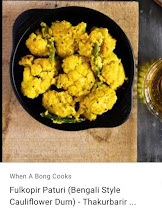Rabindranath Tagore: Birth: 7th May 1861 Calcutta. Death: 7th Aug 1941
Rabindranath Tagore was a Bengali poet, short story writer, song composer and a painter. But few people know about his passion for food!!!
"Faith is the bird that feels the light when the dawn is still dark” is one of the quotes by Rabindranath Tagore.
His multicultural upbringing was the prime reason why he had a love for food. He loved both British and Bengali food, such as Cream of Tomato sauce, Salmon in Hollandaise sauce... but there was one dish which he adored the most and that was the authentic Bengali fish.
He was such a foodie that he would often bring back recipes with him so that it can be made at his home at Shantiniketan!!!
Tagore loved Pies, Patties, Kababs, Prawn cutlets, to name a few.
All types of food recipes were tried and tasted by Rabindranath Tagore. Dahi Malpua, Sondesh, fish dishes like Bhampa Ilsh) (steam fish), Kacha ilshi er jhol, Chitol Mach Aarti chalta diye muger dal , Narkel chingri ( shrimp in coconut milk).
But his favorite was Chorchori ( a dish made of mashed vegetables with shrimp, flavored with chilly) and Surti meetha kabab ! Bournvita was his all-time favorite drink!
Tagore’s niece Indrani Devi Choudhari had maintained an exercise book of recipes, "Thakur badir anna" ( food from Tagore’s kitchen). This book mentions all the recipes relished by Tagore.
Tagore loved sweets, especially those made out of traditional chenna (ripe curd cheese), and Sondesh and were eaten with relish!!
Tagore ate lunch in traditional Indian style - sitting on the floor! However dinner was savored at the table with fork and spoon.
Tagore’s love affair with the food started at a young age when he began to write and ended with his last breath!
" I drop amoshotto ( sun dried ripe mango) in milk and squash a bomma into it , (the sound of slurping echoes in the silence). Even ants return empty handed shedding tears into my empty plate ". An excerpt from one of Tagore’s poem..........




Beautifully captured in words,Sunya
ReplyDelete